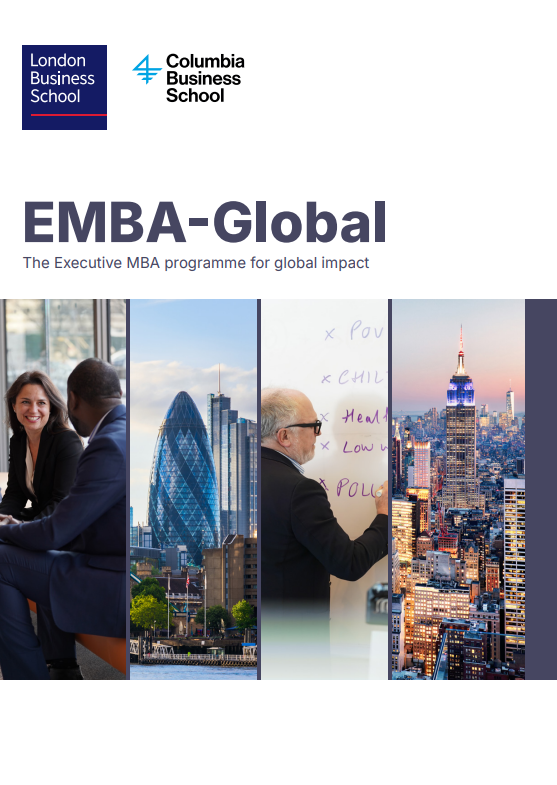
What is a brand? A simple question, but one that strikes fear into the hearts of many senior marketers. Why? Because there is no agreed definition. They range from the fanciful ‘Whatever your consumers believe it to be’ to the ill-informed ‘It’s the logo’. In my brand management elective we tackle this one fast: a brand is a product and/or a service + values + associations. That combination is the basis of a distinctive meaning that is appealing, ownable and motivating.
Can we be brands? Not really – we’re human beings, after all, not products and services – but we can take some of the principles behind what makes a brand successful and apply them to help build our professional careers and fulfil our personal ambitions. Here are five principles to help boost your personal brand.
1. Know what you want to be known for
Successful brands know what they stand for; they have a firm view of what they believe about the world and their role in it. Think about Lego. Its brand mission is to “use creative play to inspire and develop the builders of tomorrow”. Having a core point of view is vital because it moves the narrative from the commercial and functional to the human and universal.
2. Evolve to stay relevant
The brands that survive long term know how to stay consistent but fresh – that’s how they stay relevant to generations of consumers over time. Look at Red Bull. It has never veered from its core brand proposition to ‘Give you wings’ – a slogan that’s now over 25 years old. But it stays relevant to new consumers by always bringing freshness to how it communicates that core ethos – from sponsoring a freefall from space to launching a multimedia company. The world of business is moving ever faster. It’s not just the rapid evolution of tech; it’s also the speed of change in the world around us. That means you can’t stand still. Know what your core skill is, but evolve to keep yourself relevant. Invest in life-long learning, know about the changes in your sector, have a view about them and be an expert – but don’t be a static one.
3. Codes make you memorable
In my course we use one session to focus on what some in the corporate world have been known to belittle as the “painting and decorating of branding”. We’re talking here about brand codes or distinctive brand assets – the visual, verbal and experiential codes that are repeated and reinforced and which become associated with your brand. Far from being trivial considerations, they really matter. Why? Because, executed well, they pack the power to trigger a cascade of positive associations and feelings.
Johnson & Johnson’s global painkiller Tylenol, for example, is known for its red packaging. Remarkably, from the moment people see the pack, they begin to feel a sense of care and relief from pain. What does this mean for personal branding? It could be about personalised detailing; a small touch that people associate with you – like always being the first to turn up for any meeting.
Sir Martin Sorrell, the founder of WPP, the world’s largest advertising and PR group, was renowned for always replying to emails within minutes, day and night. Or you could go further and dress in a way that is distinctly yours. For a famous example of that, look no further than the late Steve Jobs. Not ready for that? Think it’s all a bit trivial? A mistake many non-marketers also make. If you’re serious about building your personal brand, think about your personal codes. They could make all the difference.
4. Use the power of communications
Communication is one of the most powerful levers of brand building. Creative communications can be the making of a brand. One of the ad industry’s most revered commercials, the famous Levi’s 501 ‘launderette’ ad from 1985, increased the sales of Levi’s by 800%. (It also propelled Marvin Gaye’s I heard it through the grapevine to No.1 and led to a spike in boxer-shorts sales!) Communication at its most basic generates awareness, which always matters, whether the context is business or personal.
At a professional level we have the channels – most notably LinkedIn, Twitter and Instagram – where the basic rules of good communications apply: be consistent, relevant, engaging. But it’s not all about the channels. We have a saying in branding that everything communicates – whether you intend it to or not. So that means how you treat people, how you collaborate, whether you switch your camera on for meetings, your coffee choice – it all says something about you, which can be a sobering thought.
5. Measure progress
Finally, great brands track their progress using multiple long- and short-term metrics and they course-correct when necessary. For this, you need a good and honest friend and a long-term perspective. Great brands such as Nike, Apple, Microsoft, Lego and Coca-Cola take decades to build and they don’t always get it right. On balance, it’s worth the investment and focus, because strong brands consistently outperform the S&P 500. Why shouldn’t all that apply to the potentially great personal brand that is you?
Helen Edwards is an Adjunct Associate Professor teaching the MBA Brand Management elective and for executive education at London Business School. Her latest book was published early 2023.


